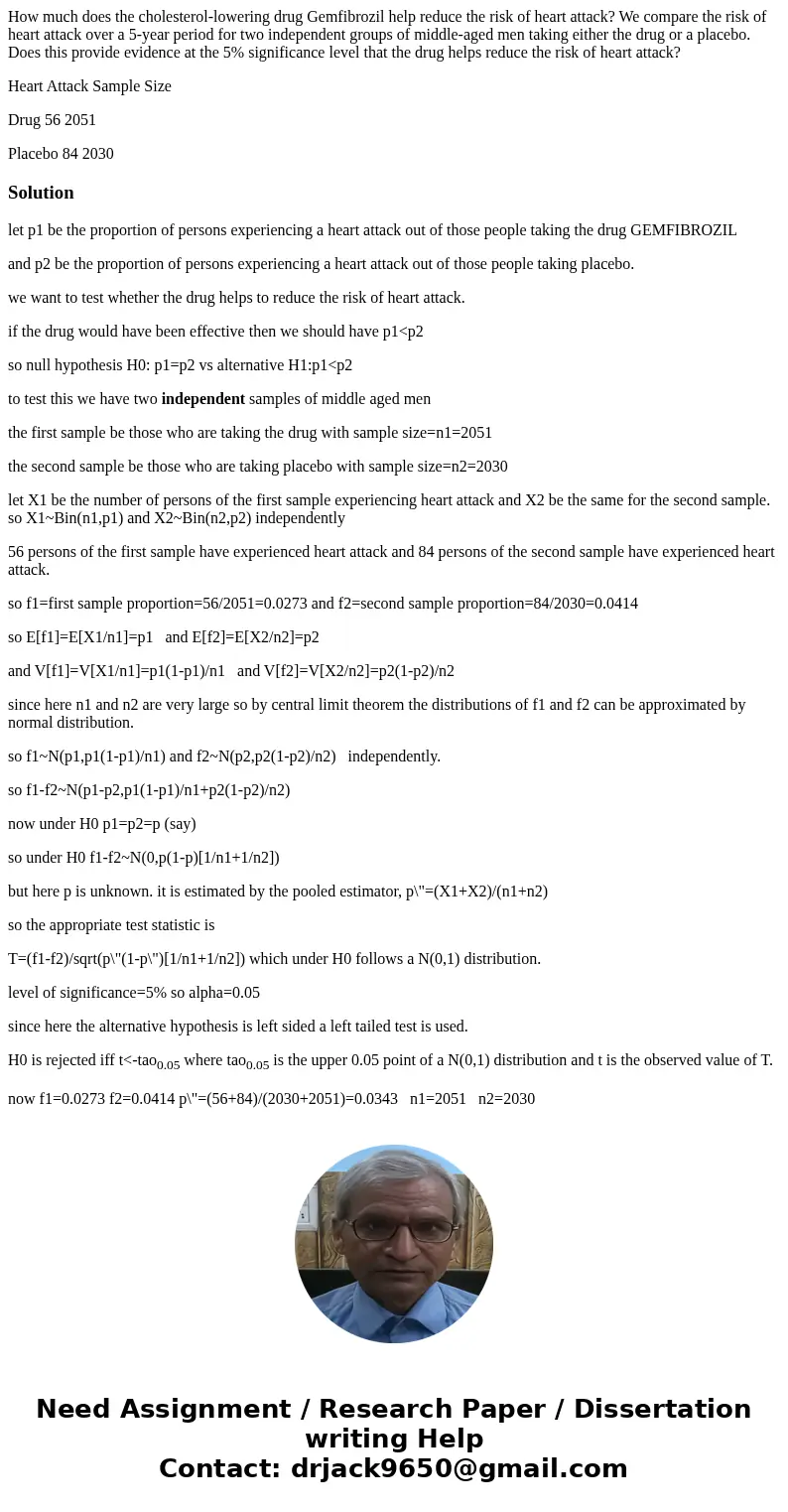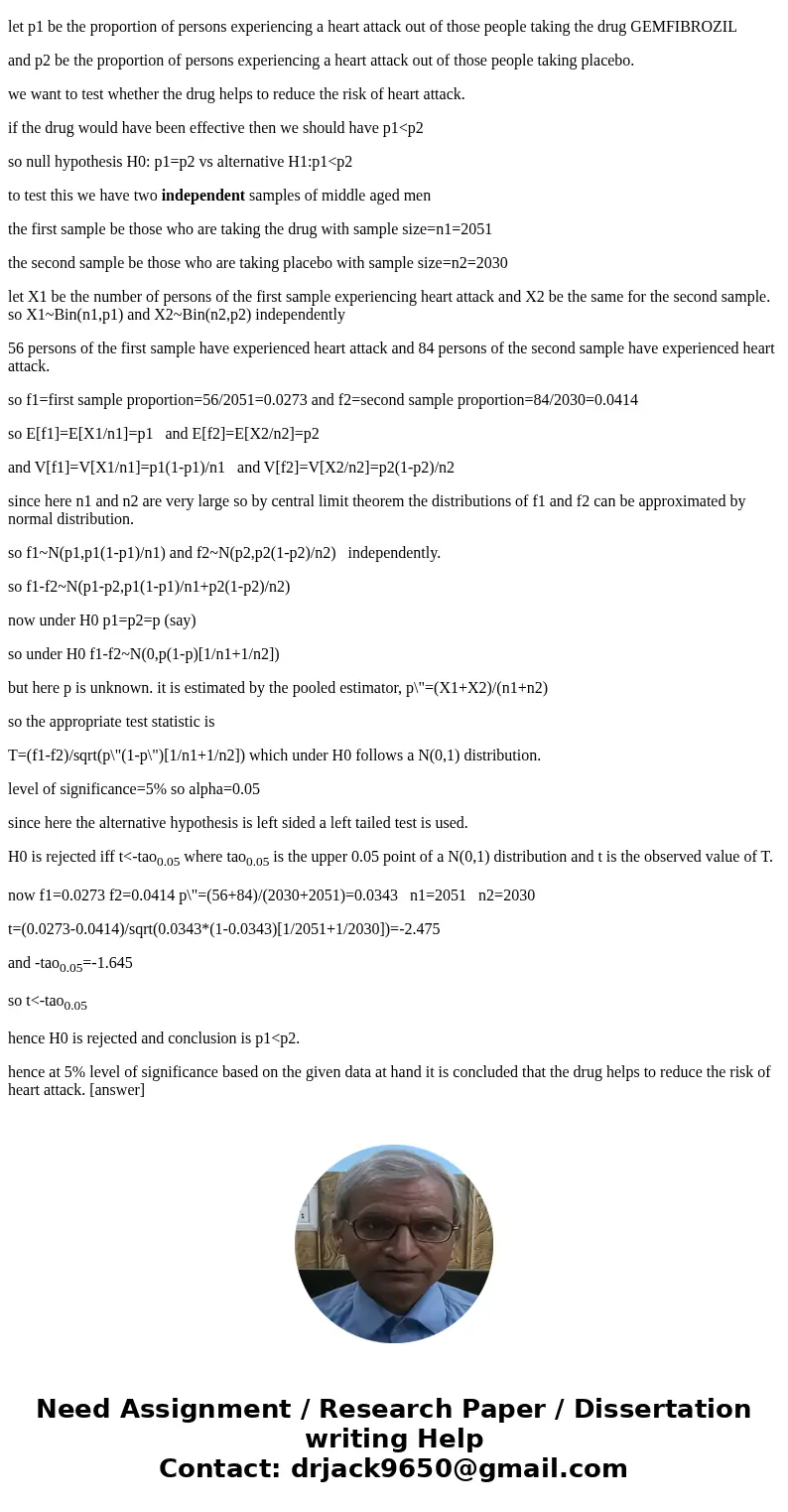How much does the cholesterollowering drug Gemfibrozil help
How much does the cholesterol-lowering drug Gemfibrozil help reduce the risk of heart attack? We compare the risk of heart attack over a 5-year period for two independent groups of middle-aged men taking either the drug or a placebo. Does this provide evidence at the 5% significance level that the drug helps reduce the risk of heart attack?
Heart Attack Sample Size
Drug 56 2051
Placebo 84 2030
Solution
let p1 be the proportion of persons experiencing a heart attack out of those people taking the drug GEMFIBROZIL
and p2 be the proportion of persons experiencing a heart attack out of those people taking placebo.
we want to test whether the drug helps to reduce the risk of heart attack.
if the drug would have been effective then we should have p1<p2
so null hypothesis H0: p1=p2 vs alternative H1:p1<p2
to test this we have two independent samples of middle aged men
the first sample be those who are taking the drug with sample size=n1=2051
the second sample be those who are taking placebo with sample size=n2=2030
let X1 be the number of persons of the first sample experiencing heart attack and X2 be the same for the second sample. so X1~Bin(n1,p1) and X2~Bin(n2,p2) independently
56 persons of the first sample have experienced heart attack and 84 persons of the second sample have experienced heart attack.
so f1=first sample proportion=56/2051=0.0273 and f2=second sample proportion=84/2030=0.0414
so E[f1]=E[X1/n1]=p1 and E[f2]=E[X2/n2]=p2
and V[f1]=V[X1/n1]=p1(1-p1)/n1 and V[f2]=V[X2/n2]=p2(1-p2)/n2
since here n1 and n2 are very large so by central limit theorem the distributions of f1 and f2 can be approximated by normal distribution.
so f1~N(p1,p1(1-p1)/n1) and f2~N(p2,p2(1-p2)/n2) independently.
so f1-f2~N(p1-p2,p1(1-p1)/n1+p2(1-p2)/n2)
now under H0 p1=p2=p (say)
so under H0 f1-f2~N(0,p(1-p)[1/n1+1/n2])
but here p is unknown. it is estimated by the pooled estimator, p\"=(X1+X2)/(n1+n2)
so the appropriate test statistic is
T=(f1-f2)/sqrt(p\"(1-p\")[1/n1+1/n2]) which under H0 follows a N(0,1) distribution.
level of significance=5% so alpha=0.05
since here the alternative hypothesis is left sided a left tailed test is used.
H0 is rejected iff t<-tao0.05 where tao0.05 is the upper 0.05 point of a N(0,1) distribution and t is the observed value of T.
now f1=0.0273 f2=0.0414 p\"=(56+84)/(2030+2051)=0.0343 n1=2051 n2=2030
t=(0.0273-0.0414)/sqrt(0.0343*(1-0.0343)[1/2051+1/2030])=-2.475
and -tao0.05=-1.645
so t<-tao0.05
hence H0 is rejected and conclusion is p1<p2.
hence at 5% level of significance based on the given data at hand it is concluded that the drug helps to reduce the risk of heart attack. [answer]


 Homework Sourse
Homework Sourse